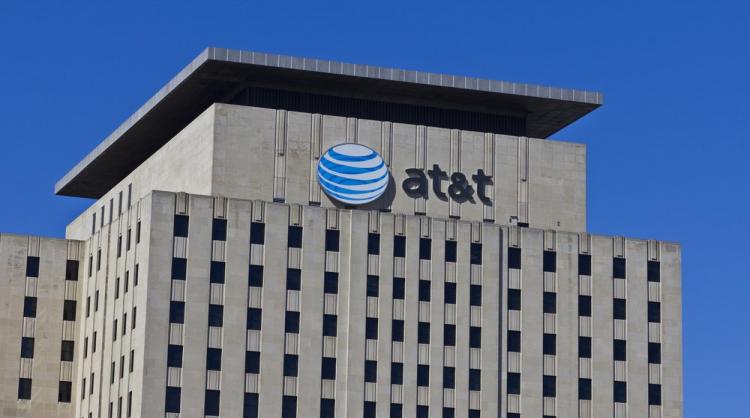AT&T Seeks Detariffing of Tandem Switched Transport to Combat Access Stimulation Abusers
October 7, 2016 | by Andrew Regitsky

For folks involved in determining whether ILEC switched access rates are just and reasonable, the FCC’s decision in November 2011 to move to a more rational system could not have been more welcome. For years, ILECs and long-distance providers have battled over every charge in all 50 states and nationally. Finally, the FCC saw the light and decided to move all inter-carrier compensation charges to a bill-and-keep structure in which carriers recover their costs of terminating local and long-distance call from their own end user customers rather than from other carriers. The move to bill-and-keep for most terminating access charges is currently in the middle of a multi-year transition that will result in terminating end office charges decreasing to zero for many carriers on July 1, 2017. Originating access charges were unaffected by the 2011 Order, but the Commission’s long-term goal is to also reduce those charges to bill-and-keep although no firm date was set.
One of the chief reasons a new access structure was needed was to reduce the arbitrage opportunities that existed under the old system which features different rates for interstate and intrastate access and lower rates for the “reciprocal compensation” assessed on terminating local calls. This led to several bad actors taking full advantage of the arbitrage build into the system. These bad actors included using various methods to stimulate call volumes to pump up the number of terminating access minutes and generate huge profits for themselves.
In its 2011 Order, the Commission addressed the issue of access stimulation by requiring ILECs and CLECs to file lower tariff rates if they had either a three-to-one ratio of terminating to originating traffic in any month or experienced more than a 100 percent increase in traffic volume in any month measured against the same month in the previous year.
The Order seemed to have had the desired effect as complaints about access stimulation have dropped sharply. However, as AT&T points out in its October 3, 2016 Policy Blog, carriers have not completely stopped trying to stimulate terminating traffic, they have simply moved many of the charges to tandem-switched transport.
Unfortunately, the 2011 Order only reduced tandem-switched transport in certain situations. To protect the access revenues of rural rate-of-return ILECs, their tandem-switched transport rates were capped at interstate levels but not reduced any further. Nor were the rates of mirroring CLECs serving customers in those rural areas. Thus, according to AT&T, unless the FCC acts, traffic pumpers will have a continued opportunity to continue their nefarious actions.
Responding to this problem, In a Petition for Forbearance filed with the FCC on September 30, 2016 AT&T requests the Commission to take the following action.
[T]he FCC should detariff tandem switching and transport access charges for all local exchange carriers (LECs), on all calls to or from LECs engaged in access stimulation. This is a natural follow-on to the Commission’s determination that access stimulation causes unreasonable rates, harms consumers, and injures competition. So long as traffic pumpers are able to generate access bills with high per-minute per-mile transport charges, this anti-competitive practice will continue. The Commission can end this now and reduce this asymmetric system that only encourages arbitrage (AT&T October 3, 2016 Policy Blog).
AT&T is correct. If the Commission detariffs tandem switched transport it would sharply reduce the opportunities for CLECs to engage in access stimulation, as competition between ILECs and CLECs push rates down. If the Commission takes this action, however, rural ILECs would question if they will be able to continue to recover their legitimate transport costs through lower tandem switched transport charges. Any rule change would have to ensure such costs could be recovered through access recovery charges (ARCs) or from the Connect America Fund (CAF). Under these conditions, the AT&T Petition would make sense.
However, with transport rates possibly shifting frequently to respond to changes in the competitive environment this type of cost showing would put enormous pressure on ILECs with few resources. In addition, carriers might be forced to exit NECA to respond to their individual competitive challenges. Thus, if AT&T’s Petition is granted, it could lead to considerable industry turmoil. A better way to discourage traffic pumpers is to treat tandem switched access like other switched access rates and reduce them to a proxy level such as $0.0007 per minute or to bill-and-keep. This would stop access stimulation, better enable the Commission to assess the amounts that need be recovered through universal service funds and avoid any industry disruptions.
AT&T also uses its Petition for Forbearance to key in on an unrelated issue. It requests the Commission to take action to make so-called “query” charges more competitive:
[T]he Commission should require LECs to assess per query “database dip” charges on toll-free calls on a competitive basis. Although not addressed in 2011, this fits naturally with bill-and-keep, as one underlying purpose of that reform was to reject the idea that only one party “should bear the entire cost of originating, transporting, and terminating a call.” The current situation not only discriminates against toll-free customers but increasingly results in tariffed query charges priced well above wholesale market rates – a sure sign of distorted competition. With carriers’ ability to seek competitive rates, these costs will fall more in line with a properly functioning marketplace (Id.)
We will have more to say about this request when we can examine the Petition for Forbearance in detail. Currently it is not yet available on the FCC website.
Once the Commission opens a proceeding to address AT&T’s Petition, the industry will have a chance to file its comments. It should be interesting to see the responses of CLECs and rural ILECs.
By Andy Regitsky, CCMI

